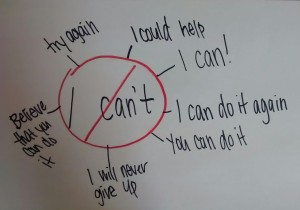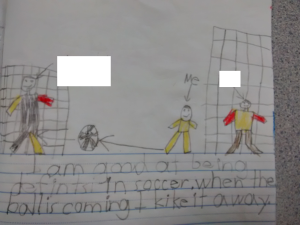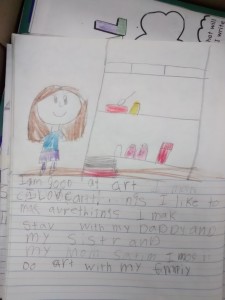Synthesis of Inquiry
Inquiry question: How can teachers help to build self-confidence within students who get frustrated in completing classroom activities?
Where I came from
My inquiry journey began in my practicum classroom and what I saw from my observations. I noticed that for many of my students, they did not believe in their own abilities to succeed in completing their journals, worksheets, or reading. I realized that this was an issue that I wanted to explore further, since this behavior was seen in quite a few students over a period of time. As a teacher, I want to make it a goal to help my students develop self-confidence within themselves, which would help them succeed not just in the classroom, but also outside in the world.
Where I am now
Over the course of the past five months, I have learned many strategies that teachers can implement into their classroom in order to help build self-confidence within their students. I have also learned how and why our students get frustrated in the first place. As bloggers and authors have cited, students often get frustrated due to a variety of reasons: they are afraid of making mistakes and failing, afraid of having their peers or teacher judge them, or because they have not been scaffolded enough by the teacher (Willingham, 2009). Learning about the reasons why some of my students may get frustrated has helped me to understand their perspective and the difficulties that they experience. It has allowed me to become more understanding and sympathetic to their situation and individual needs.
I have also learned the importance of building a positive classroom community as a way of building student self-confidence. A key part of this is explicitly teaching our students about grit and how to build a growth mindset (Stuart, 2015). I have already started to do this within my own classroom, which so far has been successful among my students. Another part of building a positive classroom community involves the relationships that a teacher forms with the students. If there was one thing that almost all of my research emphasized, it was creating a supportive relationship between teacher and student. As Rita Pierson says, every child deserves a champion or someone who will be their own personal cheerleader. You may believe that being a personal cheerleader to 25-30 students is difficult and it is, but that does not mean that we should not make an effort to be there to support each and every one of our students.
Where I am headed
In my practicum classroom, I will strive to continue to promote self-confidence and positivity through my lessons and conversations with my students. For example, I will tell my students when I am noticing that their writing is improving or if they are making an effort to try hard. Next, I will encourage my students to make mistakes and that it is only when we make a mistake that we learn the most. Finally, I will create opportunities for my students to demonstrate their learning in various ways. I understand that not many of my students enjoy writing, but they can explain their thinking and learning in articulate ways. For example, in my Fairytales unit, I will be allowing my students to create their fairytale through different modes, either through a storyboard, on the iPad on Puppet Pals, or using puppets for example.
Overall, this inquiry journey has been a fulfilling learning experience for me. I am excited to take my learning and continue to apply it to my practicum classroom.
References:
Pierson, Rita. (2013, May). Every kid needs a champion. [Video file]. Retrieved from https://www.ted.com/talks/rita_pierson_every_kid_needs_a_champion#t-196559.
Stuart, D. (2015). For noncognitive skill development, start with growth mindset – here’s how. Retrieved from http://www.davestuartjr.com/noncognitive-skill-development-growth-mindset/
Willingham, D.T. (2009). Why don’t students like school? A cognitive science answers questions about how the mind works and what it means for the classroom. San Fransico: Jossey-Bass.






